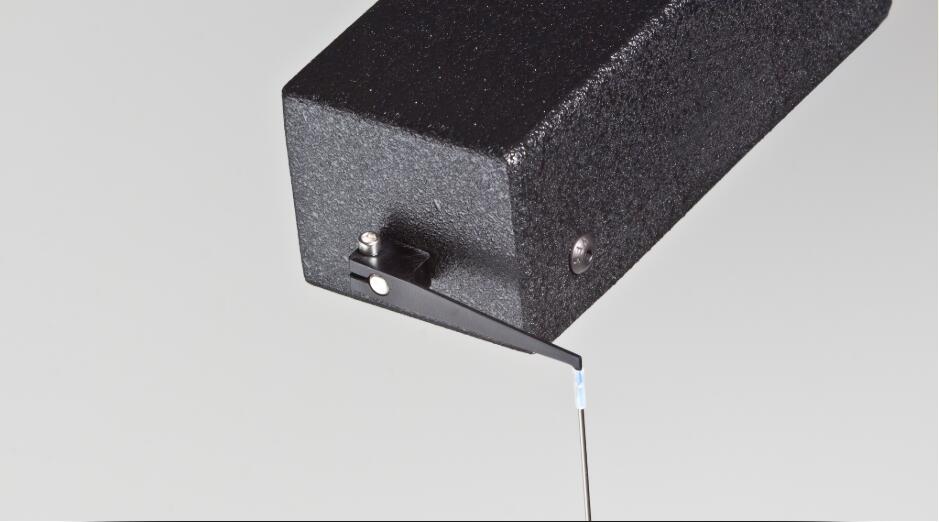300C-I: Mechanical Stimulators – Indenter
型号:300C-I
价格:请致电:010-67529703
品牌:aurorascientific
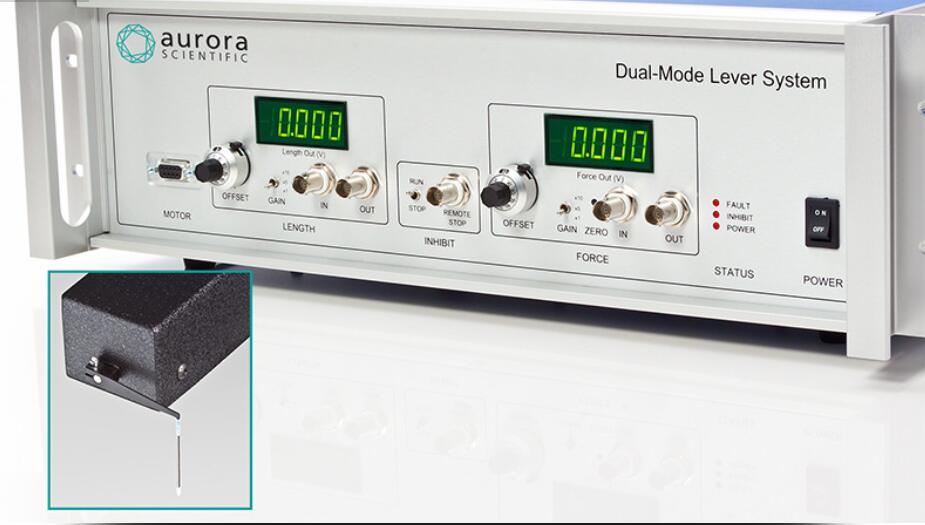
Overview
The 300C-I mechanical stimulator is an automated electronic von Frey device with the added capability to measure and control both force and length at a single application point. The 300C-I takes the variability and awkwardness out of applying force with a handheld von Frey filament or with other handheld mechanical stimulators. Our computer-controlled mechanical stimulator removes the unavoidable hand tremor associated with both von Frey filaments and other electronic von Frey systems. This removes the associated variation in force application.
Aurora Scientific’s mechanical stimulator increases throughput by eliminating the need for multiple tests to determine threshold. The force application and timing of the stimulus is consistent and precise, thereby removing the variability associated with handheld devices.
The mechanical stimulator is capable of applying constant force for pre-set periods of time with the added functionality of adjusting force at pre-determined rates. Stimulation can be applied in any combination of length or force and can follow an arbitrary force or distance application curve so force application is not limited to simple force ramps.
The delivery of constant and repeatable force ensures that consistency is maintained between experiments, subjects and studies, thus reducing avoidable error in your data and improving the quality of your findings.
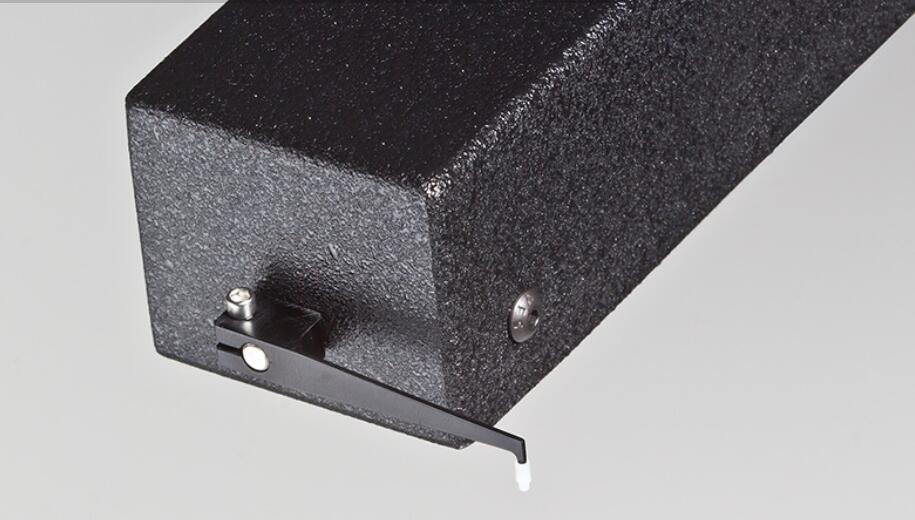
Features
- quantify mechanosensitivity using computer-controlled stimuli
- evaluate the suprathreshold mechanosensitivity
- measure the mechanical threshold without performing multiple tests
- force ranges: 0.5N – 10N
- superior resolution (to 0.3mN)
- operates in any orientation
- minimizes off-axis forces
- range of tips available (0.5, 0.8, 1, 1.5, 2, 3 mm diameter)
- application area remains constant over full range of force
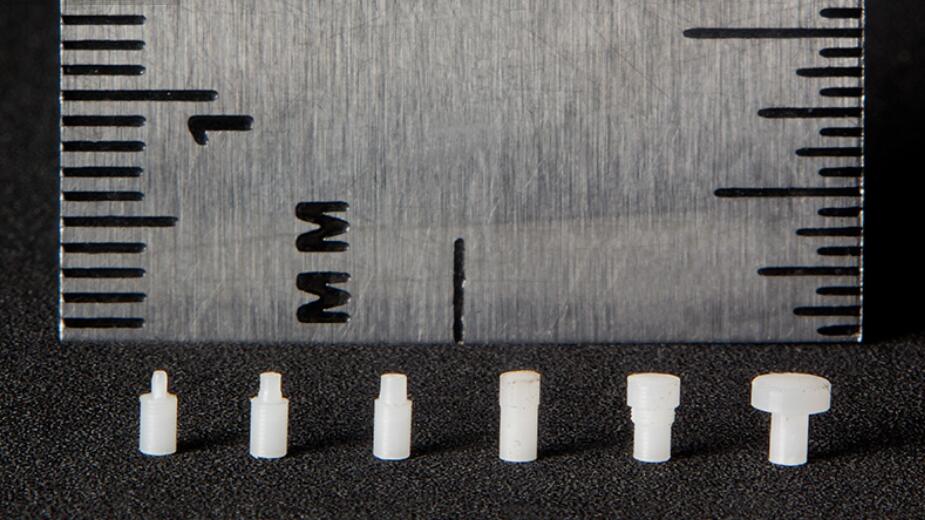
Case Studies
Customized 300C-I Facilitates Migraine Headache Research
CHALLENGE
In 2002 Dr. Dan Levy of Harvard University was studying the underlying mechanisms of migraine headaches and was looking for a method to reliably apply varying forces to sensory neurons innervating the dura mater of a rat.
Because these stimuli needed to be applied as a precise square wave, conventional, hand-held von Frey filaments could not be used. Additionally, these neurons were highly sensitive to applied pressure and limiting the area activated was a challenge.
SOLUTION
A customized version of our Dual-Mode lever systems, now the 300C-I mechanical stimulator, proved to be exactly what was required. Although our Dual-Mode lever system had been used by other researchers to apply mechanical stimuli in the past, Dr. Levy’s challenging samples required some customization. Teflon tips of specific diameters were manufactured in order to mechanically activate specific innervation sites within the dura mater. Additionally, to address the pressure sensitivity of these neurons, a customized lever arm for the instrument was built, to push the boundaries of the forces that could be applied.
RESULTS
The mechanical stimulator has been an integral part of Dr. Levy’s lab for over a decade. It has helped him extensively publish his findings about numerous types of headaches and explore several mechanisms and pathways which may underlie chronic and acute migraines. Dr. Levy continues to investigate potential treatment options targeting these pathways which may lead to helping those who suffer.
300C-I – Mechanical Stimulation of Rat Skin
CHALLENGE
In 1998 Dr. Woodbury approached us with a need to perform mechanical stimulation of rat skin stretched in a recording chamber. He needed a computer controlled mechanical stimulator that could produce controlled five second square waves of varying forces through a cylindrical indenter tip.
The design of the recording chamber meant that the mechanical stimulator had to be located above and to the side of the skin preparation.
SOLUTION
Aurora Scientific knew that a 300C Dual-Mode muscle lever would be able to provide the mechanical stimulation required while also allowing Dr. Woodbury to record both indentation distance and force. However, the location of the 300C motor meant that our normal lever arm could not be used to apply the desired forces. Therefore, an indenter arm was developed which had a vertical shaft attached to it to allow for versatile placement. Reduction of arm inertia became important due to issues which arose while tuning the 300C and after several attempts, an arm design and appropriate tuning settings were determined.
RESULTS
A 300C-I mechanical stimulator was provided to Dr. Woodbury which delivered stable and precise stimulation of his tissue preparation. The custom designed indenter arm allowed him to position the motor above and to the side of his recording chamber to properly stimulate the stretched rat skin. Dr. Woodbury has used the 300C-I in his the lab for numerous impactful studies of nociceptive and thermoreceptive systems.
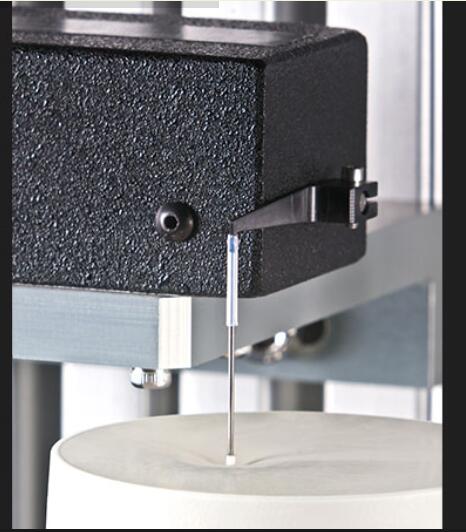
Citations
Kumar, Siddarth. et al. “Viscoelastic characterization of the primate finger pad in vivo by microstep indentation and three-dimensional finite element models for tactile sensation studies .” Journal of Biomechanical Engineering 137.6 (2015): 061002.
Qi, Huixin et al. “Cortical neuron response properties are related to lesion extent and behavioral recovery after sensory loss from spinal cord injury in monkeys.” The Journal of Neuroscience 34.12 (2014): 4345-4363.
Dieudonné, Alexandre et al. “Encoding properties of the mechanosensory neurons in the Johnston's organ of the hawk moth, Manduca sexta.” The Journal of Experimental Biology 217.17 (2014): 3045-3056.
Milenkovic, Nevena et al. “A somatosensory circuit for cooling perception in mice.” Nature Neuroscience17.11 (2014): 1560-1566.
Reed, Jamie L. et al. “Effects of spatiotemporal stimulus properties on spike timing correlations in owl monkey primary somatosensory cortex.” Journal of Neurophysiology 108.12 (2012): 3353-3369.
Jankowski, Michael P. et al. “Dynamic changes in heat transducing channel TRPV1 expression regulate mechanically insensitive, heat sensitive C-fiber recruitment after axotomy and regeneration.” The Journal of Neuroscience 32.49 (2012): 17869-17873.
Molliver, Derek C. et al. “The ADP receptor P2Y1 is necessary for normal thermal sensitivity in cutaneous polymodal nociceptors.” Molecular Pain 7.1 (2011): 13.
Ge, Weiqing, and Partap S. Khalsa. “Encoding of compressive stress during indentation by group III and IV muscle mechano-nociceptors in rat gracilis muscle.” Journal of Neurophysiology 89.2 (2003): 785-792.
Bove, Geoffrey M., Daniel R. Robichaud, and Peter Grigg. “Three-dimensional load analysis of indentation stimulators.” Journal of Neuroscience Methods 123.1 (2003): 23-30.
Khalsa, Partap S., Ce Zhang, and Yi-Xian Qin. “Encoding of location and intensity of noxious indentation into rat skin by spatial populations of cutaneous mechano-nociceptors.” Journal of Neurophysiology 83.5 (2000): 3049-3061.
